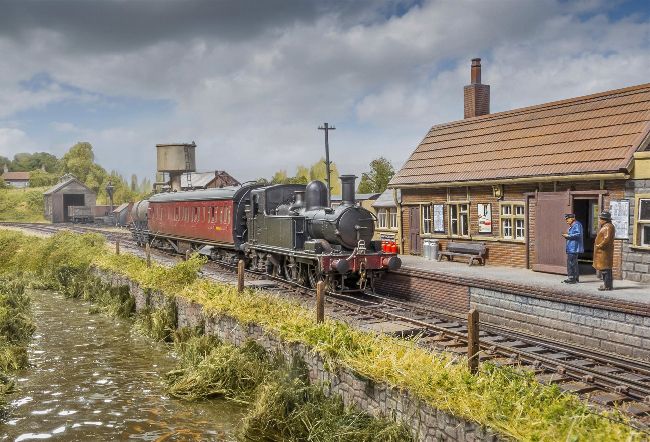HOW TO BUILD A STATION BUILDING FROM SCRATCH
In the first of a series of articles, Chris Nevard reveals how his latest layout project began, with the construction of a replica of Hemyock station building.

OGRAPHY: CHRIS NEVARD
OO GAUGE 46 hrs
Hemyock, a small village in the heart of Devonshire, was once the terminus of the Culm Valley Light Railway, a standard gauge line which ran for just over seven miles from Tiverton Junction on the Bristol & Exeter Railway’s main line from Taunton to Exeter.
took considerably longer than originally planned. Two and a half years after work began, the line finally opened in June 1876 and was operated by the Great Western Railway from the outset, the Bristol & Exeter Railway having been amalgamated with the GWR just months earlier. Intermediate stations were located at Uffculme and Culmstock, plus Coldharbour Halt and Whitehall Halt, which opened in 1929 and 1933 respectively.
Passenger traffic was sparse from the beginning, owing to the declining population of the Culm Valley and the surrounding villages. A refreshment room had been erected at Hemyock station, soon after the line opened in an effort to drum up more footfall. It didn’t work, however, and the building was repurposed as a carriage shed and – later – as a poultry store.
Traffic remained light until the opening of a substantial dairy works at Hemyock, allowing milk to be sent to markets from surrounding farms. Indeed, the lush pasture of the Culm Valley provided a vital local resource, with milk becoming the main rail-borne traffic on the branch line for the rest of its existence.
Trains often ran as mixed formations – passenger and freight – although passenger traffic on the line ceased altogether in September 1963. Hemyock station closed to goods traffic two years later, with just the United Dairies siding remaining in use until October 31 1975. With the loss of the diary traffic, the Culm Valley line closed, just a year before the line’s centenary.